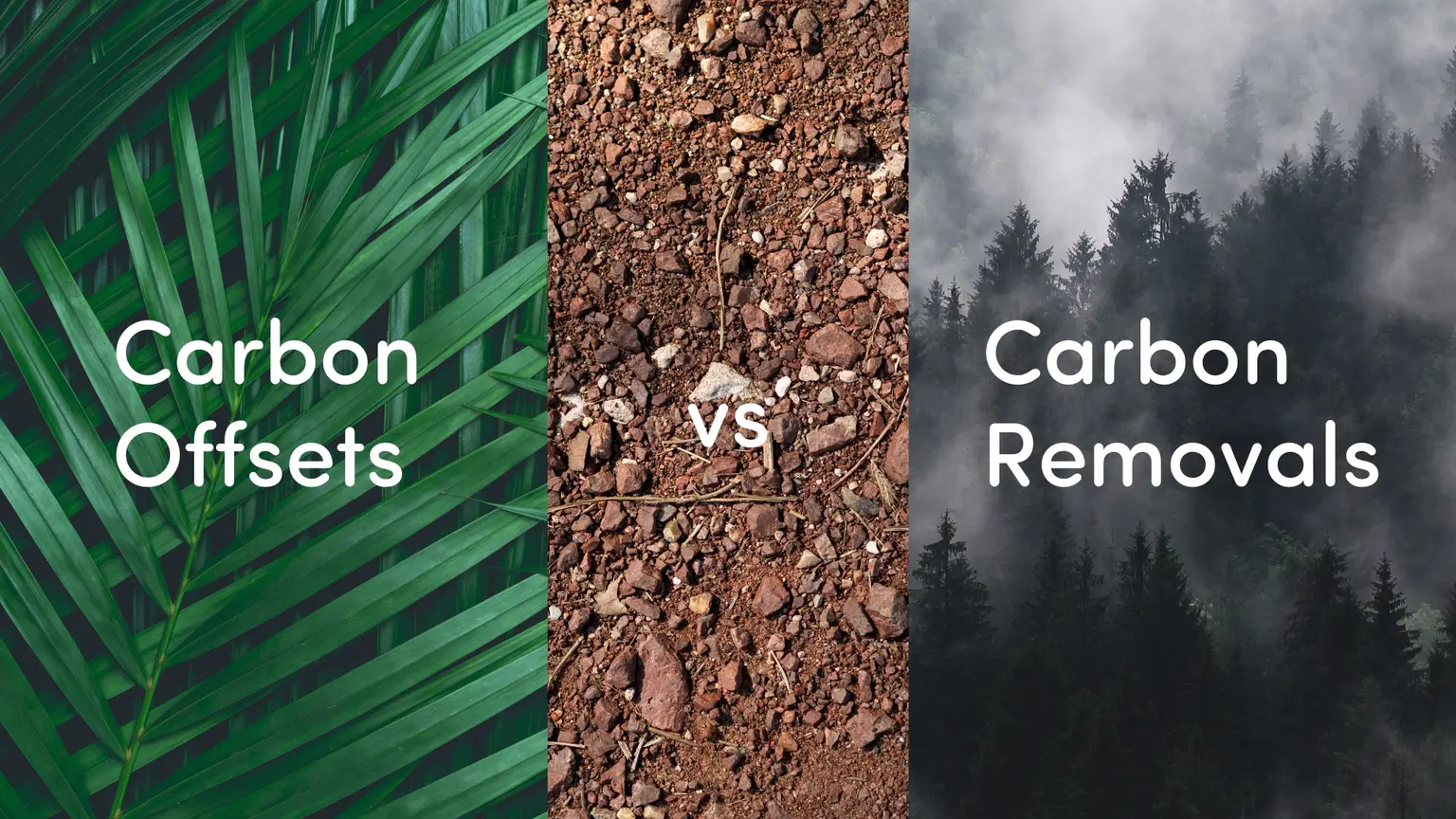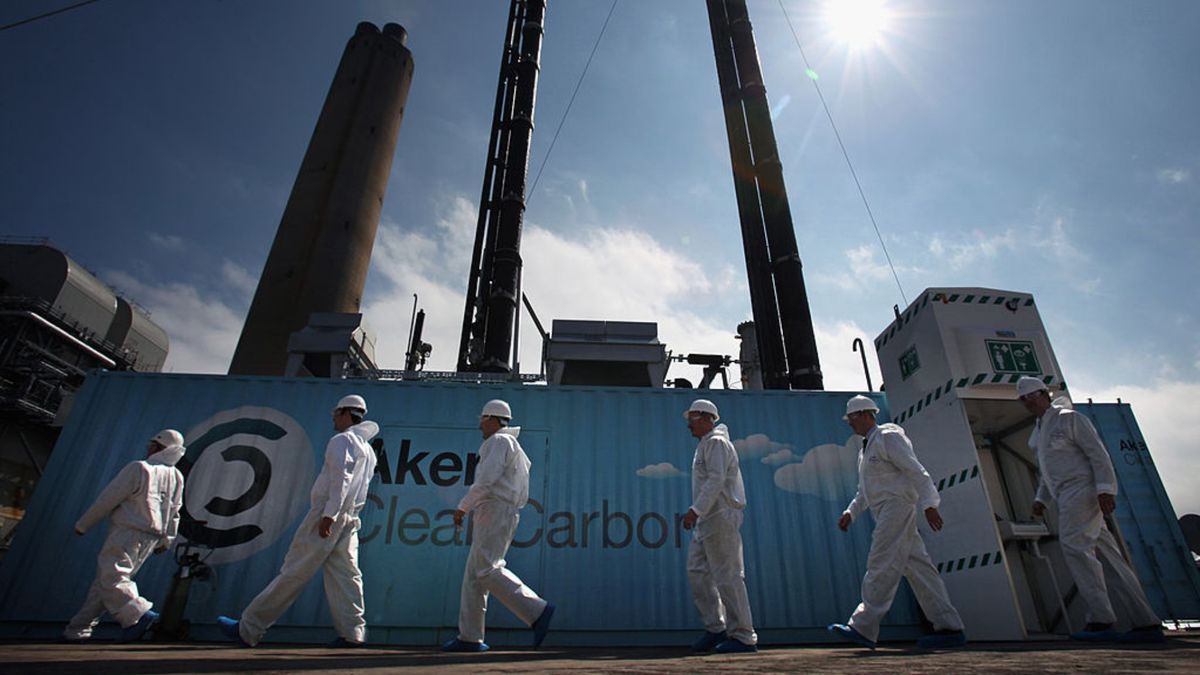
Whether your business has a complete net zero strategy or just taking its sustainability seriously, you've likely encountered the terms carbon offsets and carbon removals. Navigating the landscape of carbon management can be tricky due to its confusing terminology and jargon. So, in this article, we’ll aim to simplify these concepts and give a clear understanding of both carbon offsets and carbon removals. We'll consider the advantages and disadvantages of each, providing your business with valuable insights for informed decision-making when the time comes to delve into this stage of managing your emissions.
What are Carbon Offsets?
You can think of carbon offsets as climate helpers. They're projects that do things like creating renewable energy, making buildings more energy-efficient or restoring forests by planting trees. These solutions compensate for the pollution already produced by human activities.

When you buy carbon offsets, you're helping to decrease the total amount of emissions. For instance, if your activities emit one metric ton of carbon, purchasing an offset may ensure that an equivalent ton is prevented elsewhere—perhaps by establishing a wind farm or preventing deforestation. However, it's important to remember that the initial ton still exists, and continues to contribute to global warming.
Some examples of carbon offsets:
- Renewable energy: solar installations and wind farms create renewable energy, reducing our reliance on fossil fuels which emit carbon.
- Energy efficiency: better insulation and fuel-efficient vehicles decrease energy consumption, lowering greenhouse gas output.
- Forest and ocean conservation: protecting mature forests and marine ecosystems acts as a crucial carbon sink, offsetting emissions.
- Nature-based sequestration: reforestation, and restoring degraded landscapes enhance carbon absorption.
What are Carbon Removals?
Carbon removals differ from offsets as they involve activities that actually remove carbon dioxide from the atmosphere. Recognising their importance, the IPCC has announced that carbon removals are crucial for combating climate change and curbing global warming to 1.5°C. The consensus is that we must invest in removing carbon that is already out there. Carbon offsets will not be enough.

There are two main types of carbon removal methods: natural and engineered solutions.
Natural Solutions
These leverage nature and remove carbon through biological processes. Some examples include:
- Oceanic carbon capture optimisation: enhances the ocean's natural carbon absorption.
- Forestation: planting new forests boosts natural CO2 absorption.
- Agricultural techniques: improve soil carbon storage for a natural carbon sink.
- Charcoal creation and sequestration: burying charcoal from organic matter prevents carbon release.
- Biofuel and bioenergy: plants used as biofuel absorb CO2, with resulting waste high in carbon stored.
- Enhanced mineralization or accelerated weathering: accelerates natural processes where minerals absorb CO2.
Engineered Solutions
These involve advanced technology for direct carbon capture and storage, and include:
- Direct air capture: advanced tech extracts CO2 from the air and stores it.
- Carbon/greenhouse gas destruction: technology converts harmful gases into less damaging forms or captures and stores them, ensuring efficient carbon removal.
Which is better for your business and sustainability?
It’s not really that straightforward. Deciding what's better for your own business depends on many factors, such as cost, accessibility and project scale.
When it comes to effectiveness, carbon removals take the lead in directly addressing climate change and holding us accountable for our own emissions. They extract the surplus CO2 from the air that is causing temperature change.
However, removals are not without their challenges, and cost is a key barrier to entry, especially for smaller businesses. High cost is largely why the vast majority of businesses opt for offsets over removals. More investment and innovation in removals is urgently needed to make this solution accessible to SMEs, who collectively account for approximately 50% of business sector emissions.
When choosing between offsets and removals, here’s a few things to consider:
- Cost assessment: compare the costs of carbon offsets and removals, considering your budget and long-term financial investment.
- Impact on emissions: removals trump offsets for impact; if you are able to, invest in carbon removals.
- Accessibility and scalability: consider the availability and scalability of each solution, taking into account your business size and potential for growth.
- Regulatory compliance: ensure your chosen approach aligns with current and future carbon emission regulations to maintain compliance.
- Stakeholder alignment: align your choice with stakeholder expectations, including customers, investors, and employees, to enhance your business's reputation.
- Certifications and transparency: not all offsets and removals are created equal. Select projects that are certified, transparent and science-backed.
Need some further guidance?
For expert guidance on carbon offsets or removals, businesses can contact ethy's carbon accountancy expert here. Our team is ready to assist with personalised advice, helping businesses make informed and sustainable choices for their carbon management strategies.
Subscribe to ethy insights newsletter
Stay up to date on the latest industry news, research, blogs, events, and webinars. Tell us a little bit about yourself to help us deliver the information you care about.